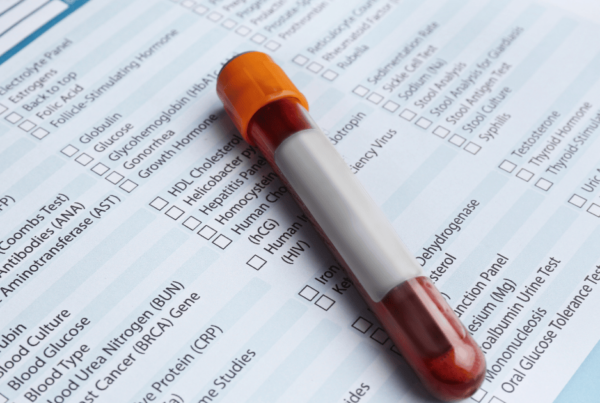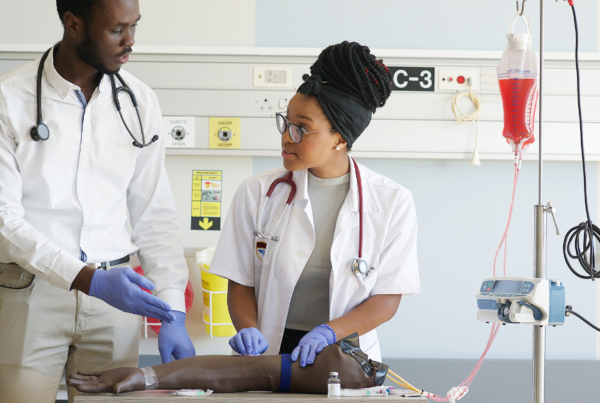Arteriovenous puncture is a complex technique that is often performed by certified phlebotomists licensed under CPT-2 or other medical professionals.
Phlebotomy is a critical skill within the healthcare field, involving the precise and safe collection of blood samples from patients. It is an art and a science that requires proper training, clinical practice, and ongoing learning to master. For any aspiring or practicing phlebotomist, having a solid grasp of phlebotomy techniques like venipuncture, skin puncture, and arterial puncture is essential. These techniques form the foundation of many diagnostic procedures and treatments in healthcare settings, making them key skills to develop for a successful career.
In this guide, we’ll delve into the core phlebotomy techniques, the importance of clinical practice, and how externships can enhance your learning experience. Whether you’re preparing for certification or looking to refine your skills, this comprehensive guide will help you master these techniques and excel in your phlebotomy career.
| Key Takeaways: |
| Phlebotomy Techniques: Mastering venipuncture, skin puncture, and arterial puncture is essential for a successful career in phlebotomy. |
| Patient Safety and Comfort: Proper technique, communication, and hygiene practices ensure patient comfort and reduce complications. |
| Training and Certification: To become a Certified Phlebotomy Technician (CPT-1), you must first complete classroom and clinical training before becoming certified. |
| Hands-On Experience: Externships provide practical, real-world experience and help build confidence and skill in patient interactions. |
| Career Advancement: Pursuing a CPT-2 license opens opportunities for more specialized roles, including the ability to perform arterial punctures. |
Key Phlebotomy Techniques
There are three primary phlebotomy techniques that all phlebotomists must become proficient in: venipuncture, skin puncture, and arterial puncture. Understanding the specific uses, procedures, and tools involved in each technique is essential for providing safe and effective care to patients.
1. Venipuncture: The Most Common Blood Draw Method
Venipuncture is the most widely used phlebotomy technique and is typically performed to collect larger volumes of blood for diagnostic tests, treatments, or donations. It involves the insertion of a needle into a vein, most commonly in the arm, to draw blood.
- Tools Used: Syringe, butterfly needle, or vacutainer system.
- Procedure: Blood is extracted from a vein, typically from the back of the hand, forearm, or inner elbow (median cubital vein).
- Purpose: Routine blood tests, diagnostic tests, blood donations.
Venipuncture is the technique that phlebotomists will perform most often. As a result, mastering it is crucial for ensuring patient comfort, preventing complications, and collecting high-quality blood samples. The process requires a steady hand, careful vein selection, and proper needle insertion techniques to avoid errors like missed veins, excessive bruising, or hematoma formation.
Best Practices for Venipuncture:
- Prepare the Patient: Clearly explain the procedure to the patient and ensure they are relaxed. Tension can cause veins to contract, making the draw more difficult.
- Vein Selection: Use palpation to feel for a strong, stable vein.The median cubital vein is frequently the initial choice due to its size and accessibility.
- Correct Needle Insertion Angle: Insert the needle at a 15-30 degree angle, bevel up, for smooth entry into the vein.
- Observe the Patient: Monitor the patient throughout the procedure to ensure they are comfortable and not experiencing adverse reactions.
During certification exams and practical assessments, you will be evaluated on venipuncture, thus it’s critical to build muscle memory and confidence in this skill.
2. Skin Puncture: Ideal for Small Blood Samples
Skin puncture, also known as capillary puncture, is performed when only a small amount of blood is needed. It involves puncturing the skin with a lancet to access the capillary blood flow from the fingertip or heel, commonly used for tests like glucose monitoring or hemoglobin checks.
- Tools Used: Lancet, microtainer tube, alcohol swab, gauze.
- Procedure: Blood is drawn from capillaries in the fingertip or heel.
- Purpose: Glucose tests, cholesterol checks, pediatric blood draws.
This technique is particularly useful in pediatric settings or for patients who have difficulty with venipuncture due to small or fragile veins. Skin punctures are also often used for point-of-care tests that require immediate results, such as glucose or cholesterol tests.
Best Practices for Skin Puncture:
- Choose the Right Site: For adults, use the fingertip (ring or middle finger). For infants, the heel is the preferred site. Avoid using the thumb or index finger as they are more sensitive and prone to infection.
- Warm the Area: If necessary, warm the area to increase blood flow and make the puncture easier.
- Proper Pressure: Apply consistent pressure to obtain the sample, but avoid excessive squeezing, which can contaminate the blood with tissue fluid.
- Ensure Sample Quality: Collect an adequate sample without overfilling the container to ensure accurate test results.
In comparison to venipuncture, skin puncture is a less intrusive technique, yet it still calls for skill to execute correctly, guarantee patient comfort, and produce a viable sample for analysis.
3. Arterial Puncture: The Most Advanced Technique
Arterial puncture is a more invasive procedure that is primarily used to collect blood for arterial blood gas (ABG) analysis. This test measures the levels of oxygen and carbon dioxide in the blood, as well as blood pH, making it a vital diagnostic tool in critical care settings, especially for patients with respiratory conditions.
- Tools Used: Specially designed arterial puncture needle, heparinized syringe.
- Procedure: Blood is drawn from an artery, typically the radial artery in the wrist or the femoral artery in the groin.
- Purpose: ABG tests to assess lung function, oxygenation, and overall respiratory health.
Because arterial punctures are more precise and dangerous than venipunctures or skin punctures, advanced-level phlebotomists or other healthcare experts frequently do them. Errors in the technique could lead to consequences such as artery obstruction, infection, or hematoma.
Best Practices for Arterial Puncture:
- Specialized Training: Arterial puncture requires additional training and certification, as it is considered an advanced procedure.
- Precise Technique: The needle must be inserted at a 45-degree angle into the artery, and the blood should flow freely into the syringe without the need for suction.
- Patient Monitoring: Closely monitor the patient before, during, and after the procedure for any signs of distress or complications.
- Follow-up Care: After the puncture, apply pressure to the site for at least 5-10 minutes to prevent bleeding or hematoma formation.
While Certified Phlebotomy Technician 1 (CPT-1) professionals in California are typically only allowed to observe arterial punctures, obtaining the CPT-2 license opens the door to performing this advanced technique.
Training and Certification for Phlebotomy Techniques
To become proficient in these techniques, phlebotomy students must undergo formal training and gain hands-on experience. In California, certification as a Certified Phlebotomy Technician (CPT-1) is required to work as a phlebotomist.
CPT-1 Certification Requirements:
- 40 hours of classroom training: This covers essential topics like anatomy, physiology, infection control, patient interaction, medical ethics, and California law.
- 40 hours of clinical training: During this time, you’ll perform at least 50 venipunctures and 10 skin punctures under supervision.
- Written Examination: After completing your training, you’ll take a state-administered exam to test your knowledge of phlebotomy techniques, procedures, and safety protocols.
Gaining Real-World Experience through Externships
Although classroom and clinical training provide a solid foundation, real-world experience is invaluable. Externships allow phlebotomy students to practice in actual healthcare settings under the supervision of experienced professionals.
Benefits of externships include:
- Exposure to a Variety of Patient Conditions: Each patient is different, and externships offer the opportunity to practice techniques on patients with varying vein conditions, body types, and medical histories.
- Improved Patient Interaction Skills: Communicating with patients and ensuring their comfort is a crucial part of phlebotomy. Externships help phlebotomists develop confidence in interacting with patients, explaining procedures, and calming those who may be anxious or fearful.
- Career Opportunities: Many externship programs lead to job offers, as employers often hire phlebotomists they have trained and observed in action.
Advancing Your Career: From CPT-1 to CPT-2
For those looking to advance their career in phlebotomy, obtaining a Certified Phlebotomy Technician 2 (CPT-2) license is the next step. This certification allows phlebotomists to perform more complex procedures, including arterial punctures.
CPT-2 Certification Requirements:
- CPT-1 Certification: You must already hold a CPT-1 license.
- 1,040 hours of clinical experience: This experience must include hands-on practice in a healthcare setting.
- 20 successful arterial punctures: These must be completed under supervision.
Advancing to a CPT-2 license opens doors to more specialized and higher-paying phlebotomy roles, particularly in hospitals, critical care units, and diagnostic laboratories.
Mastering Phlebotomy Techniques: Best Practices for Success
No matter which technique you’re performing, certain best practices will help you master the art of phlebotomy. These principles are essential for providing safe, efficient, and patient-centered care.
- Ensure Patient Comfort and Safety: Always prioritize the patient’s well-being. Explain the procedure clearly, maintain a calm demeanor, and address any questions or concerns.
- Maintain Proper Hygiene and Infection Control: Follow all infection control protocols, including hand hygiene, glove use, and the proper disposal of needles and other sharps.
- Use Correct Equipment and Techniques: Choose the appropriate tools for the procedure and ensure that you are following correct insertion angles, puncture depths, and sample collection protocols.
- Stay Up-to-Date with Training: The healthcare field is constantly evolving, so staying current with certifications, continuing education, and new technologies is critical for your success.
FAQs:
What is venipuncture?
Venipuncture is the technique of drawing blood from a vein, usually from the inner elbow or forearm, for medical tests, blood donations, or treatments.
What is the difference between venipuncture and skin puncture?
Venipuncture involves drawing blood from a vein, while skin puncture (capillary puncture) involves pricking the skin, usually on the fingertip or heel, to collect a smaller blood sample from capillaries.
Do phlebotomists often perform arterial punctures?
A difficult process, arterial puncture is often performed by registered medical professionals or certified phlebotomists with a CPT-2 license. Testing for arterial blood gas (ABG) is one of its frequent uses.
What are the training requirements to become a Certified Phlebotomy Technician (CPT-1)?
To become CPT-1 certified, you need to complete 40 hours of classroom instruction, 40 hours of clinical practice, and pass a state-administered written exam.
How can I gain more practical experience in phlebotomy?
Externships provide real-world experience by allowing you to practice phlebotomy techniques in healthcare settings under the supervision of experienced professionals.
What are the benefits of advancing to a CPT-2 license?
A CPT-2 license allows phlebotomists to perform more advanced procedures, including arterial punctures, and can lead to better job opportunities and higher salaries.
Conclusion
Mastering phlebotomy techniques is a combination of education, practice, and continued learning. Whether you’re performing venipuncture, skin puncture, or arterial puncture, the key to success is precision, patient care, and adherence to safety standards.
With proper training, certification, and experience through externships, you’ll be well on your way to becoming a skilled and confident phlebotomist.
By following these best practices and staying committed to improving your skills, you’ll not only succeed in your certification but also in building a rewarding and fulfilling career in healthcare.
Ready to master phlebotomy?
Join Phlebotomy Now School for expert training and hands-on experience. Gain the skills and confidence needed to excel in venipuncture, skin puncture, and more.
Enroll today and start your journey to becoming a Certified Phlebotomy Technician!


